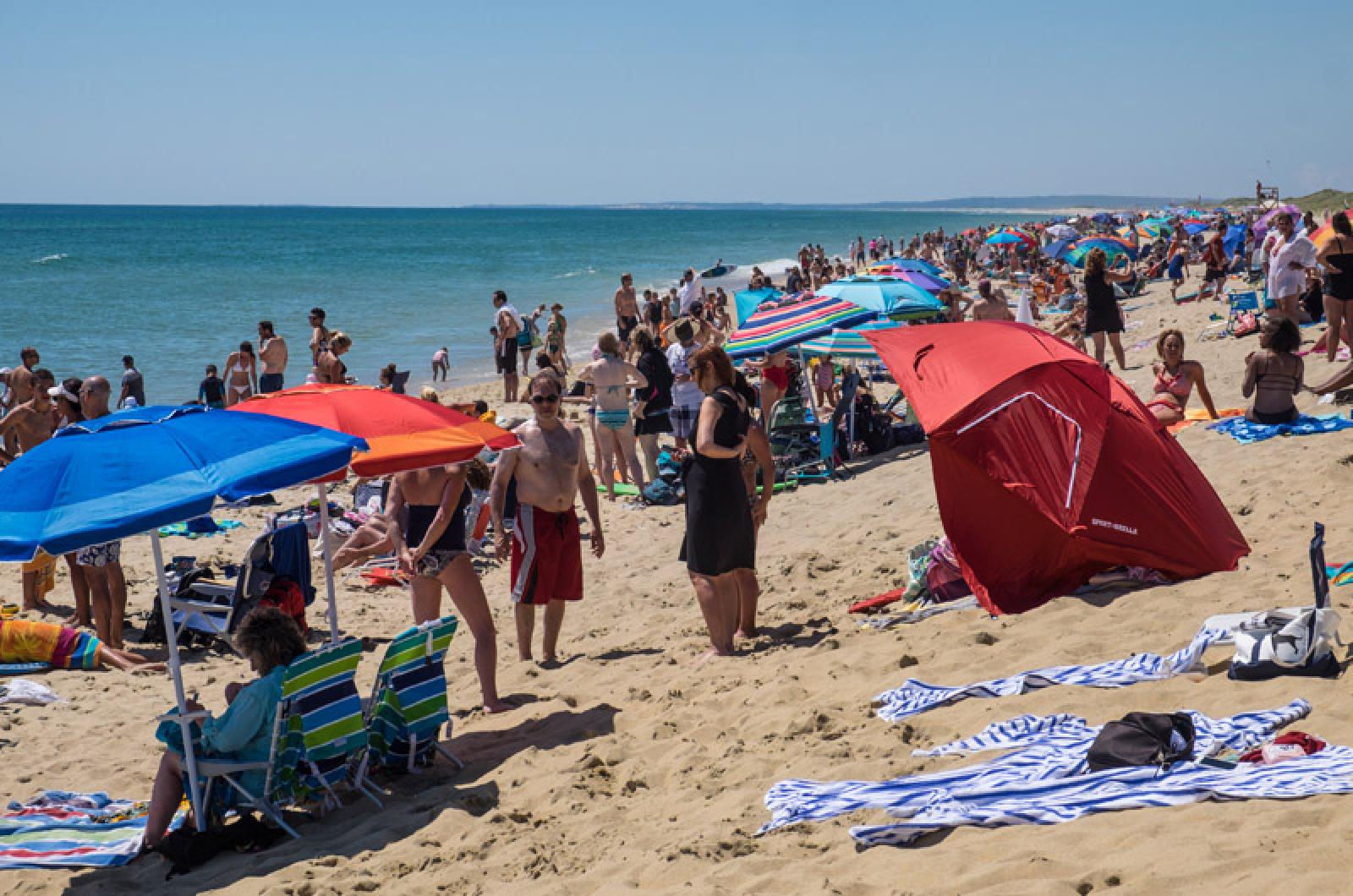South Beach was closed briefly and swimmers advised to use caution Wednesday after a hammerhead shark sighting.
Officials at the New England Aquarium said the shark is most likely a smooth hammerhead shark, a species that regularly frequents Vineyard waters.

Edgartown parks department administrator Jessica McGroarty said South Beach was closed to swimming for about an hour Wednesday morning after several people reported seeing the shark from shore.
A biplane from nearby Katama Airfield went up to survey the shoreline and confirmed the shark sighting, she said, and also reported that the shark appeared to be heading back out to sea.
After the shark sighting lifeguards blew their horns and pulled everyone out of the waters, Ms. McGroary said. The beach was closed for about an hour and reopened around noon.
A few hours later the biplane went back up and spotted the shark again, Ms. McGroarty said, and swimmers were again asked to come out of the water. But the biplane circled back and did not find the shark, and swimmers were again given the all-clear.
Trustees of Reservations assistant superintendent Chris Bruno said the Trustees, which oversees several beaches east of South Beach, were also advised about the sighting of the shark, which appeared to be about eight-feet or more in length.
Swimmers were given a cautionary warning that a shark had been seen in the area so they could make an informed decision before swimming, Mr. Bruno said. Norton Point and Trustees beaches on Chappaquiddick remained open.
New England Aquarium spokesman Tony LaCasse said the shark would most likely be a smooth hammerhead shark. There are nine different species of hammerheads, but the smooth hammerhead is the only one that frequents warm temperate waters.
Mr. LaCasse said the smooth hammerhead, like a roughtail stingray seen off the Vineyard last week, is a species that regularly spends time in Vineyard waters during the summer but not in abundance and rarely seen by people.
"Any large shark is potentially dangerous to people," he said, adding that it is prudent to be careful around any wildlife. There is no history of smooth hammerheads being aggressive with people, he said, but they might act in a defensive manner if threatened.
There is a small chance the shark seen was a great hammerhead, he said, which generally spends time in tropical areas but could be comfortable in the warmer southern New England waters in August and September.
Smooth hammerhead sharks are considered a coastal pelagic species, spending time on the continental shelf. They eat squid, small fish, rays, skates, and even smaller sharks, he said.
They are often solitary, and grow to be 13 to 14 feet in length. One of their distinctive features is a dark brown color.
The other distinctive feature of the hammerhead shark is the hammer-shaped head, with eyes located far apart on each end of the hammer. The sharks use the hammer in loose sediement to look for rays and skates.
Trustees of Reservations superintendent Chris Kennedy said later Wednesday that brown sharks are frequently seen off Trustees beaches, include some caught Tuesday night during a Martha's Vineyard Surfcasters tournament, but hammerhead sharks are a much rarer sighting.
He also cautioned that The Trustees are starting to see Portuguese man of wars, bright blue or purple siphonophores similar in appearance to jellfyish. Man of wars have long tentacles that can sting humans; the stings are painful but not fatal.
Mr. Kennedy said a few Portuguese man of war washed up on the Trustees' south facing beaches earlier this week, and when southwest winds return in the next few days more are expected. They have been seen on southern-facing Vineyard beaches, sometimes in relatively large numbers, over the last four or five years.







Comments (14)
Comments
Comment policy »